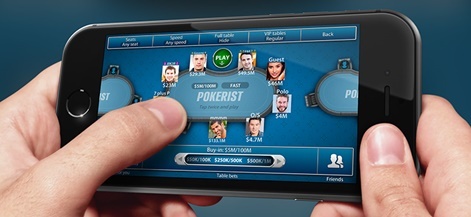Sam Forrest is director of global communications and Content at KamaGames.
As every developer knows, pricing a game can be tricky. How do you provide value for the player and keep your own books in the black? What are competitors charging and why? And how do you define “good value”?
Depending on the type of game they are building, and the specific game mechanics, some games would only be financially sustainable on a paid model, while others would be better off offering the app for free, whilst incentivising their players and really figuring out how to enhance the playing experience through paid features.
Once the business model is clear, it’s finding what’s the correct type of bundles to offer and “that” precise number that’s not just profitable but that customers also think is fair and enhances the playing experience.
Generally, the most popular games released over any given year usually have a price range from free to $60 (and even higher if you take microtransactions into account) which is an incredibly broad spectrum to work within.
For free-to-play (F2P) titles, it becomes even more complicated; raising questions of what to offer paying players and their non-paying counterparts (who they often play alongside or against!).
15 years ago, the South Korean game Maplestory became the first major free-to-play game. Back then, it was to combat piracy by offering a cheap, legitimate, bug-free and safe way for the masses to access the game. The image has evolved over the years. While primarily associated with mobile games, the F2P model is now making inroads across all genres and platforms.
F2P games like DC Universe Online had 18 million players at one stage, mostly on PlayStation 3 and PlayStation 4. Meanwhile, long-running franchises are switching from subscription and paid to F2P, such as Blizzard’s Starcraft.

F2P looks like a risk at first glance, especially for relatively expensive productions like the games mentioned above.
There are though huge advantages that F2P has over other payment methods (for developers and players alike).
The most obvious is the potential for higher player numbers, which is essential for online multiplayer games. The ongoing revenue and “down the funnel” conversions (payments deeper into the game) are a big boon for developers too. Indeed, over 90 per cent of mobile game revenue on iOS is from F2P games.
The payment method also offers options to the players that are absent in other games. With a triple-A title, everyone pays the same cover charge, regardless of how deep or shallow their dive is. (Someone who plays Skyrim for 40 hours pays the same price as another customer who plays it for two.)
However, in F2P, players don’t pay until after they’ve played for a few minutes (and on most cases, they don’t pay at all). And they might have the option of speeding up progress with payments, or to progress more slowly through “grinding”.
Who foots the bill and is it fair?
The beauty of F2P, when it’s done “correctly”, is that a minority of paying players are happy to subsidise the other players. In fact, according to one recent survey, regardless of genre, only 2.5 per cent of players pay in F2P.
And the numbers get even more interesting as you delve deeper: GameRant reports that: “A recent study from Swrve has determined that only 2.2 per cent of a free-to-play player base ever pay for the content on average, with almost half of the revenue coming from ten percent of that number, a minuscule 0.22 per cent.”
The dilemma lies in the equal importance of both paying and non-paying players. While non-payers comprise the majority of participants, their experience is subsidised by payers.
Then there’s the added factor of data, as some developers value players’ information than the cash they spend; social media, demographic information, contact details and so on.
In multiplayer games, players add value as participants, regardless of whether they pay. The challenge is making the game equally compelling for the players regardless of whether they open their wallet or not.
This brings us to the big question; what do you pay for in a F2P game? Using one of our games as an example, Pokerist is free-to-play, and players receive in-game currency (“chips”) every day they take part.
They can buy more for as little as US$.99, which opens access to longer games, higher stakes or special tournaments. Players can also pay for cosmetic perks, such as virtual “gifts” and skins to boost their interactions with others and to further personalise their experience.

In Pokerist and countless other examples, paying customers see real perks but the playing field is even for all players. Conversely, developers can venture into choppy waters when they give paying players perceived unfair advantages.
Microtransactions and their micro-aggressions
If a player has sufficient good will towards a F2P game, they’ll forgive the occasional misstep; one item costing too much, an occasional unfair charge. Since F2P games and their payment systems are malleable, it’s possible to course correct.
However, it’s when the microtransactions feel relentless and pushy, even aggressive, that resentment kicks in… and player numbers begin to drop.
It’s perfectly acceptable to allow for more skins to be bought, for access to other content such as a paid-only level, chapter or mini-game, which some developers offer. However, it is vital that the core, free experience should be worthwhile in itself, not just for those making the micro-payments.
The controversial “pay-to-win” model is one way to alienate a majority of your fans. Recently EA came under fire for “over-milking” the in-game micro-transactions and leaned on the pay to win model with a recent product – Star Wars: Battlefront II.
Unfortunately they learned the hard way that you can only push it so far. Star Wars: Battlefront II should have been one of the biggest gaming success stories of the year. Instead, its onerous and expensive microtransactions (on top of an initial cover charge) angered fans, saw a sales drop of over 60 per cent after its first week, and even affected the company’s stock price.
The blurred line
The best games, in any genre, are immersive experiences, which might lead players to temporarily forget the difference between imaginary, in-game currency and their own money.
Those chips, coins, gold and builders accelerate your progress in an imaginary world with money that’s earned in the very real world. The blur between real and imaginary money causes headaches for players and developers alike.
Smurfs’ Village was a wholesome game based on the beloved children’s characters. But, to quote Forbes: “Smurfs’ Village takes advantage of the iTunes rule that once an account password has been entered after a free or paid purchase, it doesn't need to be entered again for fifteen minutes. So minutes after getting their parents to install the free game, kids are going on a Smurfberry spending spree. Smurf Village apparently isn't making it explicit this costs real money”.
This led to children spending hundreds of dollars of their parents’ money, in one case racking up a bill of $1,400. Politicians started to wade in.
US Democrat Representative Edward J. Markey wrote an open letter to the Federal Trade Commission outlining his concerns. In the letter, quoted in The Washington Post, and also addressed to Apple and Google, he said: "I am concerned about how these applications are being promoted and delivered to consumers, particularly with respect to children, who are unlikely to understand the ramifications of in-app purchases.” The FTC is America’s federal enforcement agency for unfair and deceptive advertising and marketing.
Apple now requires a password for every in-app purchase.
F2P – The secret end of level boss
The F2P formula is fraught with potential pitfalls. The wrong approach can alienate paying players, free players, or even both at once. It’s a tricky balance and a relatively young discipline.
When it’s done the right way, it’s fair, it offers great value to players and is equally compelling to those who pay and those who don’t. And, as developers look to conquer international markets, their F2P model will also have to withstand regulations in other countries, laws and cultures.
The best app games are deceptively tricky. The same can be said about mastering the F2P formula.





















